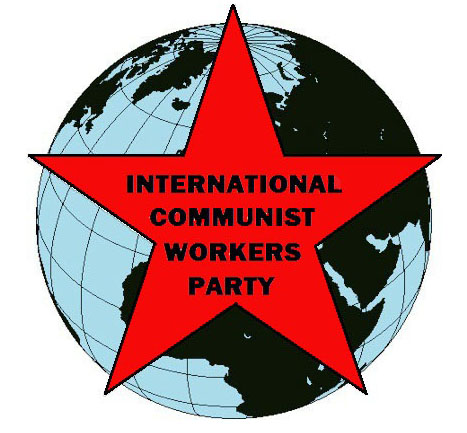
 |
FIGHT FOR COMMUNISM! |
International Communist Workers Party | |
Part II of our discussion of Mao’s “On Contradiction,” showed that he used the concept of main contradiction to justify making temporary alliances with the enemies of the working class. Despite this misuse, Mao was right that there has to be one contradiction that has the greatest influence on a process at a particular time, and that is the main (or principal) contradiction.
The Main Aspect of a Contradiction
Mao was also right that the two sides of a contradiction do not balance each other. One side is the main or dominant one at any specific time. Under capitalism, the capitalists are the dominant side in the capitalist-worker contradiction, but a successful revolution makes the working class the dominant side. In a contradiction inside a worker, commitment to the working class can be dominant or selfishness and individualism can have the upper hand. Inside an atom of matter, the forces of attraction can be dominant or the tendency to come apart may be stronger.
Mao argued that the dominance of one side of a contradiction is not permanent. Conditions can occur in which the main aspect changes into the weaker one, and the previously weaker side becomes the main one. Mao claimed that in the contradiction between the forces of production and the social relations of production, either side can become the main aspect, given the right circumstances.
Dialectical Identity
Mao called the shift of the main aspect of a contradiction from one side to the other side “transformation into the opposite.” When two things are united by the possibility of one transforming into another in this way, Mao called them “identical.” He also called the connection between the two sides of a contradiction a kind of identity. Things that can turn into each other, like peace and war, or health and disease, must be connected. Things that can struggle against each other, like communism and revisionism, must be connected.
This connection, this dialectical “identity,” is always combined with struggle. Following Lenin, Mao said that struggle is absolute and identity is limited and temporary. Eventually, contradictions come apart and are resolved.
Antagonism and Contradiction
Along with the correct ideas mentioned here, Mao also borrowed the bogus concepts of “antagonistic” and “non-antagonistic” contradictions from Soviet philosophy. Soviet writers never settled on a single explanation of what was supposed to make a contradiction antagonistic or not, and Mao does not explain it either. He agreed with the Soviet attempts to defend socialism by claiming that the contradictions of socialist society do not tend to become intense, lead to crises and explosions, or require violence in order to be resolved. This is just the opposite of what actually happened in the USSR and later in China. Socialism is a form of capitalism, subject to the inner laws of capitalism, and its contradictions cannot be resolved without its destruction.
Antagonism means hatred, violence or attempts to destroy, but the word does not name a special kind of contradiction. A contradiction only becomes resolved by becoming more intense, whether it is the contradiction of the sides in a war or a revolution, or a political disagreement among friends. Socialist terminology like “antagonistic” has no more place in dialectics than capitalist ideas like justice or democracy have in working out communist politics. (For more on “antagonistic” contradictions, see Red Flag, Dec. 4, 2014 and Feb. 5, 2015).
In comparison with Soviet views, Mao added a new wrinkle to antagonism. He claimed that a contradiction could switch from antagonistic to non-antagonistic, and vice-versa. Mao would later say that the contradiction between the working class and the “national” capitalists in China could become non-antagonistic, which he took to mean resolvable without violence. Thus, like Mao’s errors about the main contradiction, his wrong views about “antagonistic” contradictions were connected with fundamental political errors: alliance with or tolerance of the enemies of the working class.
Despite these defects in Mao’s dialectics, he later developed dialectical materialism in some important ways. We will discuss these advances in the next column.